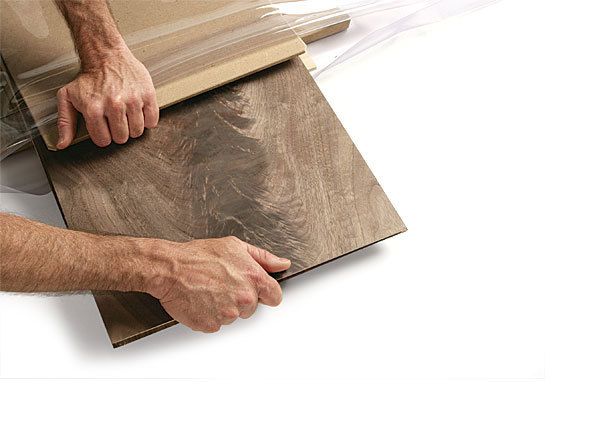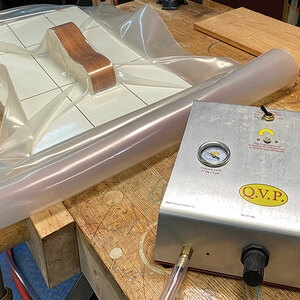A Vacuum Press Makes Veneering Easy
How to get started creating beautiful panels
Synopsis: Veneering is a great way to work with beautiful woods that are too rare, too highly figured, or too temperamental to be used as solid stock. It also allows much greater control over wood grain and figure as elements of design and decoration. The wide availability of vacuum-bag pressing systems has made veneering accessible to more woodworkers because it eliminates the need for bulky mechanical presses or armies of clamps. In this guide, J. Speetjens demonstrates how to choose a vacuum press and use it to veneer a flat panel.
From Fine Woodworking #208
Veneering is a great way to grow creatively as a woodworker. The process lets you work with beautiful woods that are too rare, too highly figured, or too temperamental to be used as solid stock. It also allows much greater control over wood grain and figure as elements of design and decoration. This creative freedom is more accessible than ever thanks to the wide availability of the vacuum-bag pressing system. The vacuum system eliminates the need for bulky mechanical presses or armies of clamps. It can be used to veneer flat panels small and large—from cabinet doors and drawer fronts to case sides and tabletops. The system also can handle more advanced applications like curved work, marquetry, and more.
If you plan to work only on small panels (under 4 ft.) with occasional curved pieces, it’s possible to fully enjoy vacuum veneering with a small system that costs around $400. If you have larger projects in mind, though, you can bring home a system that will serve any veneering need for $1,000 or a little more. This article will help you sort out the options and get started.
Choose a bag to fit your work You’ll find it most logical to start by choosing a bag that’s big enough for the work you plan to do. Simply put, you can’t veneer what you can’t fit in the bag.
Bags come in a huge range of sizes. Don’t let that confuse you. Instead, think about the scale and nature of your work. Choose a bag that’s at least 6 in. longer and wider than the largest flat panel you anticipate veneering. Curved work requires even more room—a foot at each end and at least a foot beyond the assembly on the sides. This added space helps ensure that the collapsing bag will conform to the workpiece without excessive stretching. Think, too, about where your work may be headed in the future. If you seriously expect to tackle larger veneering jobs down the road, you might want to buy a larger bag.
The next big question on bags has to do with material. At the grocery store, the bagger asks “paper or plastic?” When you’re shopping for a vacuum system, the question is “vinyl or poly?” If you plan to do a lot of veneering, the simplest answer is to buy a polyurethane bag if you can afford it. Poly is generally more puncture-resistant and more flexible, better at returning to its original shape after being stretched. You’ll spend less time patching pinholes and it will be a long time before you need to replace it (I’ve had mine for 18 years).
For the full article, download the PDF below:
Fine Woodworking Recommended Products

Bahco 6-Inch Card Scraper

Whiteside 9500 Solid Brass Router Inlay Router Bit Set























Log in or create an account to post a comment.
Sign up Log in